"The chief 9 millimeter prize, of $500, was awarded to Clarence R. Underwood, of 3838 Kennerly Avenue, St. Louis, Mo. This was a well photographed and smoothly assembled study of the famous St. Louis Zoo" Photoplay, June 1928, 136.
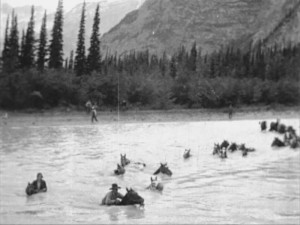
"Shows an expedition through northeastern British Columbia by Mary Gibson Henry, Pennsylvania botanist and plantswoman. Mrs. Henry was interested in the legendary "Tropical Valley" of northern B.C., where the warmth of hot springs supposedly fostered vegetation not otherwise found in the region. The film was shot in the summer of 1931, during the first of four such journeys she made in the period 1931-1935. Mrs. Henry was accompanied by her husband, Dr. J. Norman Henry; four of her children; topographer Knox McCusker (of the Dominion Topographical Surveys Branch); Dr. B.H. Chandler, a surgeon friend; and outfitter S. Clark, as well as various wranglers. The second and third reels of this three-reel film show the party of 16 travelling by pack-train, crossing rivers, caching food, and fishing, as well as some camp scenes. At an encampment of "Grand Lake Indians" on the Tetsa River, they engage Charlie Macdonald, the chief's son, to guide them to Toad Hot Springs on the Toad River, but they do not proceed north to Liard Hot Springs. On the return trip south, stops include St. Paul's Lake, Henry River, and Lake Mary and Lake Josephine [named after the Henry's daughters]; these place names do not seem to have become official. Following the Peace River, they arrive at Hudson's Hope (having travelled 800 miles in 79 days), and continue down river to Taylor Flats." (BC Archives)
The title given above is a supplied title based on the film contents. The actual title of the film is unknown, since it survives as reels 2 and 3 of 3 -- and the actual title and credits (if any) would likely have been at the start of reel 1.
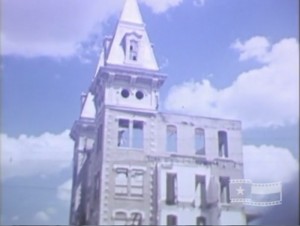
"This collection of 16mm clips was originally shot and compiled in the 1950s by W.H. Tilley. Footage features images of downtown St. Louis (including St. Louis Union Station), Philadelphia's Independence Hall, 'Demolishing of Deaf School' (1956), the Texas State Capitol and Congress Avenue, Barton Springs (1953), exterior and interior views of the Tilley home (1953), the flag and Capitol building at sunrise, and sightseeing in Montreal (including parades, a carriage, and views from Mt. Royal)" Texas Archive of the Moving Image.
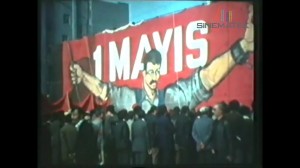
“Kaya Tanyeri 1 Mayıs 1977 mitingine elinde 8 mm kamerası ile katıldı. Kızı Çağla Tanyeri de ses kayıtlarını alıyor ve babasına yardım ediyordu. Kaya Tanyeri miting öncesi Beşiktaş’taki coşkuyu ve Taksim’e yürüyüşü kaydetti. Taksim meydanına geldiğinde ve “malum” katliam başladığında ne yazık ki çekimi yapamadı. Öncesinde çektikleri ile sonradan yaşanan katliamın fotoğraflarını kullanarak ve “Görevimiz Tehlike” filmine gönderme yaparak kurguladı. Hiç gösterimi yapılmadı. Bu film yıllarca Kaya Tanyeri’nin kişisel arşivinde kaldı. Ta ki bize erişinceye kadar. Biz bu filmi ve Güneşli Bataklık filminin kamera arkası belgeseli olan ‘Güneşe Dönük Kamera’ isimli 8mm filmlerini dijitalleştirdik. ve işte sizlerle paylaşıyoruz.” Sinematek.tv: http://sinematek.tv/1-mayis-77-1977/ (1 November 2019).
“Kaya Tanyeri attended the meeting, 1 May 1977, with an 8mm camera in his hands. Her daughter, Çağla Tanyeri, was assisting the recording as well. Before the meeting, Kaya Tanyeri made a record of the "enthusiasm" in Beşiktaş and the march on Taksim. When they came to Taksim, the infamous massacre was just starting and he could not continue to record everything. Using the former shootings and the photographs of the massacre, he edited the multiple audiovisual resources in reference to the Mission: Impossible. The film has never been screened before and it was stored in Kaya Tanyeri’s archive until Çağla Tanyeri found the original material. The original 8 mm film was digitized to share with a larger audience by Sinematek.” Sinematek.tv: http://sinematek.tv/1-mayis-77-1977/ (1 November 2019).
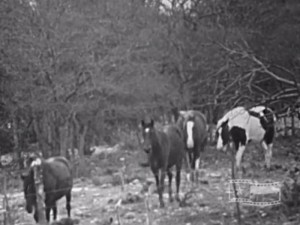
"This amateur film chronicles several young ranchers in their day-to-day activities. The film is divided into six chapters, each highlighting a different theme. Setting the scene with shots of a river bend and surrounding cliffs, the movie shows two young men skipping stones by a creek. After playing around with rocks and a rope swing, they drive back to 141 Ranch. At the ranch, they take care of their cattle and spend quality time grooming and riding their horses. The last chapter introduces a strange boy, who startles one of the ranchers as he washes a frying pan outside. The film ends with the young men riding their horses towards the camera" Texas Archive of the Moving Image.
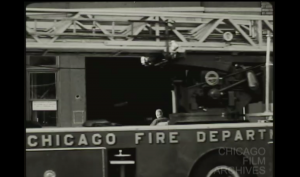
"University of Illinois Chicago (UICC) student film that documents the Chicago Fire Department house and fire officers of 158 West Erie Street. Images of the officers at work and play are interspersed with portraits of the firehouse, which is located in Chicago's River North neighborhood." Chicago Film Archives
"Members of the Preston family enjoying the carnival celebrations at Greater Brighton, in 1928. Various activities are seen taking place on the beach, seafront, streets and promenade. Includes shots of a jazz band performing outside; people driving miniature cars around a small race track and a woman playing on a one-armed bandit machine. Also includes footage of the Duke and Duchess of York's visit to the Royal Pavilion." (NWFA Online)
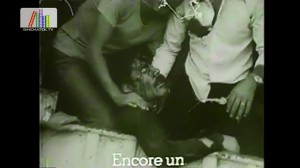
“Bu filmi ile Ümraniye 1 Mayıs mahallesindeki yoksul halkın barınma hakkı mücadelesi 1970’li yılların 2. yarısının atmosferinde veren bir film yapmış […]. 1977 senesinin 2 eylül günü 1 Mayıs Mahallesi’ne gecekondu yıkımı için gelen polisler ile mahalle halkı arasında çıkan ve 12 mahallelinin ölüp onlarcasının yaralandığı çatışmalar sırasında çeşitli sosyalist yapılar etrafında örgütlenmiş mahalle sakinlerinin gösterdiği direniş Türkiye’deki sosyalist mücadele tarihi içerisinde çok önemli bir yere sahiptir [...].” Sinematek.tv: http://sinematek.tv/2-gun-2-eylul-direnisi-1978/ (13 November 2019).
“The conflict between the District May 1 organized in various socialist collectives and the police that came to the district to demolish the shantytown, which resulted in 12 people living in the district killed on 2 September 1977 has an important place in the history of the socialist movement in Turkey [...]. [İshak Işıtan’s] film is about the poor people of Ürmaniye/District May 1’s a struggle for the housing right reflecting the atmosphere of the second half of the 1970s [...]. Sinematek.tv: http://sinematek.tv/2-gun-2-eylul-direnisi-1978/ (13 November 2019).
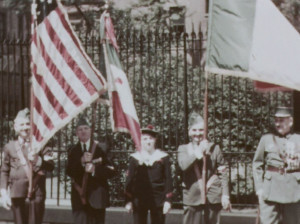
“Last year, marking the twentieth anniversary of the World War’s end, Mr. Gallet produced Vingt Ans Après, a color film with sound, which depicts activities of the French War Veterans of New York, of which he is a member.” Movie Makers, Jun. 1939, 347.
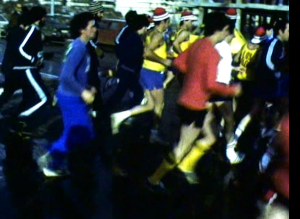
El filme muestra una carrera en la que se observa la presencia de nieve en la calle y la carretera por donde corren los participantes. La película está editada con una entrevista y aparecen fotografías del cross popular y de los participantes. Hay una voz en off durante algunas partes de la película que narra y comenta la carrera de forma informal y con un toque de comedia. El locutor habla del pelotón como si fuese el parte de ellos y si los estuviese animando. Se muestran varias entrevistas con participantes y termina con algunos planos de la ciudad ya finalizada la carrera como la retirada de las vallas de seguridad y del polideportivo.
The film shows a race in which there is snow on the street and on the road where the participants run. The film includes an interview and overlapped images of the popular cross and the participants. An off voice narrates the race in an informal manner with a touch of comedy. The narrator talks about a platoon as if he were part of it and cheers them on. Several interviews with participants are shown and the film ends with shots of the city once the race is over, like withdrawing security fences and images of the sports center.
Total Pages: 79